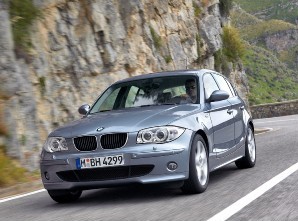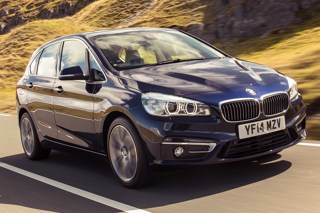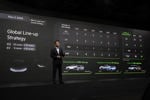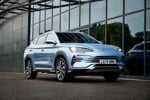Review
Let’s get straight to the point – the 1-series is a winner. Sculptured and conspicuous – and better looking in the metal than in photos – it beats most competitors in ride and handling, and gives retailers a whole new set of buyers to target. BMW is incentivising them to achieve 70% conquest sales for the model, which is scheduled to sell 5,500 this year and 17,000 in 2005.
Chris Clark, 1-series product manager (and the son of Scottish BMW dealer John Clark), has circled Alfa 147, Audi A3, Merc A-class and VW Golf as primary competitors, but believes dealers should also look to drivers of high spec Focus, Civic, 307, Megane and Astra.
BMW expects the 1-series appeal to be broad, from ages 25-60, although it hopes to attract younger buyers, lowering the brand’s average customer age of 45, and more women (BMW average: 21%; 1-series target: 35-38%).
They get to choose from four four-cylinder engines: two petrol, entry-level 1.6-litre and 2.0, and two 2.0-litre diesels – 122bhp and 163bhp.
First the disappointment: the 2.0-litre petrol does not live up to BMW’s high standards. It fails to excite, suffers from a real lack of urgency and belies its 0-62mph paper figure of 8.7s with a stodgy mid-range. It’s no surprise that it will account for just 5% of sales.
Jump into the 163bhp 2.0-litre diesel, however, and what a contrast. Effectively the performance engine in the range, it offers a punchy drive, excellent pulling in every gear and effortless driving. But it’s not the pick of the bunch: that goes to the 122bhp version. Slower to 62mph, yes, but at overtaking speeds, the 41-point dip in bhp is barely noticeable, although it does get a bit reathless at (very) high speeds. BMW says this engine will account for 25% of the range (the 2.0 diesel 30%), but we’d expect more people to plump for the cheaper option.
The 1.6-litre petrol is a gusty unit that will show most of its rivals a clear pair of heels and will attract interest from high spec 1.8-litre Focus drivers.
A 1.8 petrol goes on sale in early 2005. Speculation is rife of an M version, and we expect a 200bhp-plus 2.5-litre within 12 months to compete with its rivals’ performance cars.

Strengths: Ride, handling, diesel engines
Weakness: Poor 2.0 petrol, styling might not be to all tastes
Opportunity: New sector, new buyers, more annual sales
Threat: Will it dilute BMW offer for top-end buyers?
The USP: Ultimate driving’ in the C-sector
Prices: from £15,690 (116) to £20,800 (120d SE).
Engines: Petrol: 1.6, 1.8, 2.0; diesel 2.0 122/163bhp
Transmission: 5sp man (1.6), 6sp man/auto, rwd
Performance: 0-62: 10.8s (116i) to 7.9s (120d); top speed: 125mph to 137mph
Efficiency: 37.7-50.4mpg comb; 150-181g/km CO2
CAP RV (3yr/30k): 52-55%
Rivals: 147, Golf, A3 Sportback, high end Focus, Megane, Civic
Factsheet
No information available.














